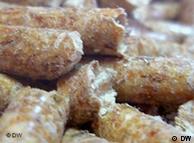Video Game Review | Assassin’s Creed II
On the Scenic Trail of Intrigue: Adventures in 15th-Century Italy

Ubisoft Screen
Assassin’s Creed II, by Ubisoft, shifts the fight between Templars and Assassins to Renaissance Italy.
Published: December 7, 2009
Whatever the Italian tourism board is paying Ubisoft for making the spectacular new game Assassin’s Creed II, it isn’t enough.
O.K., that’s a joke. There is absolutely nothing to suggest that any secret payments are flowing from Rome to Ubisoft’s headquarters in a Paris suburb.
But perhaps there should be. That’s because Assassin’s Creed II may interest more young men around the world in visiting Italy than any advertising campaign or entertainment sensation since Sophia Loren.
Over the next few semesters some teachers of Italian history will be surprised — not altogether pleasantly, I’m sure — as some of their new students confess that they have already explored 15th-century Florence and Venice in a video game. (The progressive professors will then find a way to incorporate the game into their lectures.)
Much like the other superlative third-person action game of the season, Sony’s Uncharted 2, the new Assassin’s Creed is an order of magnitude more polished, engaging and sophisticated than its progenitor. As with Uncharted 2, the new Assassin’s Creed conveys the unmistakably buoyant sense of a team of developers maturing as artists and growing into the full flower of their creativity and craft. In a field as vibrant as video games, titles like Assassin’s Creed II demonstrate just what wonder this relatively new form of entertainment can evoke.
There, perched atop the highest spire of Santa Maria del Fiore, I can see Florence stretching into the mist below me. Down in the clamorous streets, I am surrounded by merchants, nobles, thieves, clerics, guards, artists and courtesans going about their business. I flit over rooftops like a zephyr, skirt balconies and dance along clotheslines as I try to avenge the betrayal and killing of my father and brothers by the powerful cabal known as the Templars. I save Lorenzo de’ Medici from certain death and he becomes my benefactor. I befriend Leonardo da Vinci as he decodes the secrets in ancient codices I discover.
On the trail of the Templars I travel from Florence to San Gimignano in Tuscany and my family’s palazzo in the walled town of Monteriggioni, then through the Apennine Mountains and Forlì in Romagna and to Venice. I pilot Leonardo’s glider over the City of Bridges at night, soaring from atop one huge bonfire to the next as I infiltrate the ducal palace. Eventually I confront the chief of the Templars, the vulpine Rodrigo Borgia, also known as Pope Alexander VI, within the Sistine Chapel and its ancient vaults.
In all, Assassin’s Creed II provides an unparalleled historical adventure along the lines of an interactive Dan Brown or James Clavell novel, melding historically accurate locations, personages and events with pseudoplausible conspiracy theories rooted in antiquity.
The conceit of the game is that you are actually in the near future as the epochs-long struggle between the evil Templars and the antihero Assassins continues to rage. You are using an advanced machine to explore the memories of your historical ancestors. In the first game in the series that ancestor was an Assassin in the Levant during the Third Crusade in the late 12th century. This time the ancestor is unraveling the mystical secrets of the Renaissance.
I’m not an architecture expert, but the luscious detail and natural, ennobling proportions and styling of the environments in Assassin’s Creed II suggest that Ubisoft employed more than a few. The voice acting in most of the game is convincing (though the few, thankfully brief, scenes set in the modern day are mostly atrocious).
In its structure, perhaps the fairest way to describe Assassin’s Creed II is as the best open-world game this side of the Grand Theft Auto series. The main plotline is always available, but it is quite easy to spend hours on side quests, delving through optional crypts and simply exploring cities and countryside. (For the record, both games feature prostitutes.) If one wanted to be uncharitable one could even say that Assassin’s Creed is basically a Grand Theft Auto knockoff with gondolas instead of sports cars.
But that is not a bad thing at all because Ubisoft clearly recognized that what makes Grand Theft Auto so fabulous isn’t merely the openness of the world, but the depth and richness of the production behind it. Grand Theft Auto IV’s Liberty City is so compelling because the people who made it so obviously love New York. Likewise, Assassin’s Creed II betrays an infectious enthusiasm for the wonders of the Italian Renaissance.
I spent 18 hours of solid play getting through the main story in Assassin’s Creed II while making an effort to avoid distraction. I easily left another dozen hours — for full excavation of the nooks and crannies still to discover — on the table. Just as I hope that the Grand Theft Auto team now turns to its hometown, London, I hope that the Ubisoft Assassin’s Creed team soon comes home to the incredible moments and settings of the French Revolution.
I’m sure the tourism officials won’t complain.











